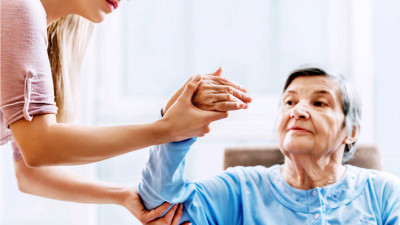 17th May 2016
17th May 2016
May is Stroke Awareness Month
May is National Stroke Awareness Month. About 795,000 Americans suffer a stroke each year or put another way, there is a stroke occurring every 40 seconds. Strokes can happen at any time and without warning. When a patient suffers a stroke they may have disabilities related to motor and sensory impairments. Physical therapy can create individualized rehabilitation program’s aimed at helping stroke victims regain control over their motor functions.

With the help of a physical therapist and popular pt modalities most stroke victims can
recover some or all of their strength and mobility.
Physical therapy can help stroke victim’s:
- Gain strength
- Increase endurance
- Improve range of motion
- Address gait abnormalities
- Aid in any sensory deficits
Physical therapy is particularly important when there are impairments to limb function. Stroke victims who suffer from impairment to the use of a limb are at risk for “Learned Non-Use” which is the disuse of non-functioning limbs. However, studies show that increased use of impaired limbs creates plasticity in the brain which can actually increase functionality in the limbs.
Physical Therapy for Impairments Caused by Stroke
- Underwater Treadmill Cycle: Cardiovascular fitness is an important factor in the overall health of our patients. When balance may be an issue, an underwater treadmill cycle gives stroke patients the ability to exercise in order to improve their cardiovascular fitness without the need to balance or place pressure on the joints.
- Whirlpool therapy: Spasticity (rigidity or tension in muscles which can cause exaggerated tendon reflex) can be a problem for patients who have suffered from a stroke. Submerging the legs for 30 minutes or more in a therapeutic whirlpool can greatly reduce spastic episodes.
- Gait training: Gait training with an emphasis on basic skill building and strength help improve motor and postural control of stroke patients post stroke. Working progressively with daily tasks: hands and knees to kneeling, kneeling to standing looks to build the foundational strength needed to move to gait training work with parallel bars, balance pads, etc.
- Continuous Passive Motion: Decrease in arm functionality is a common impairment in patient’s post stroke. Studies have shown that the use of Continuous Passive Motion (CPM) machines help enhance shoulder range of motion and increase functionality of the limb.
- Therapeutic Exercise: When treating stroke patients, physical therapist’s will use active and passive range-of-motion exercises as well as the temporary restraint of healthy limbs while practicing motor tasks in order to build strength, stamina and function.
Stoke is the third leading cause of death in the United States. It is also the leading cause of disability in the U.S. Therapeutic rehabilitation is therefore imperative post stroke in order to help survivors of stroke regain function and maintain independence.





